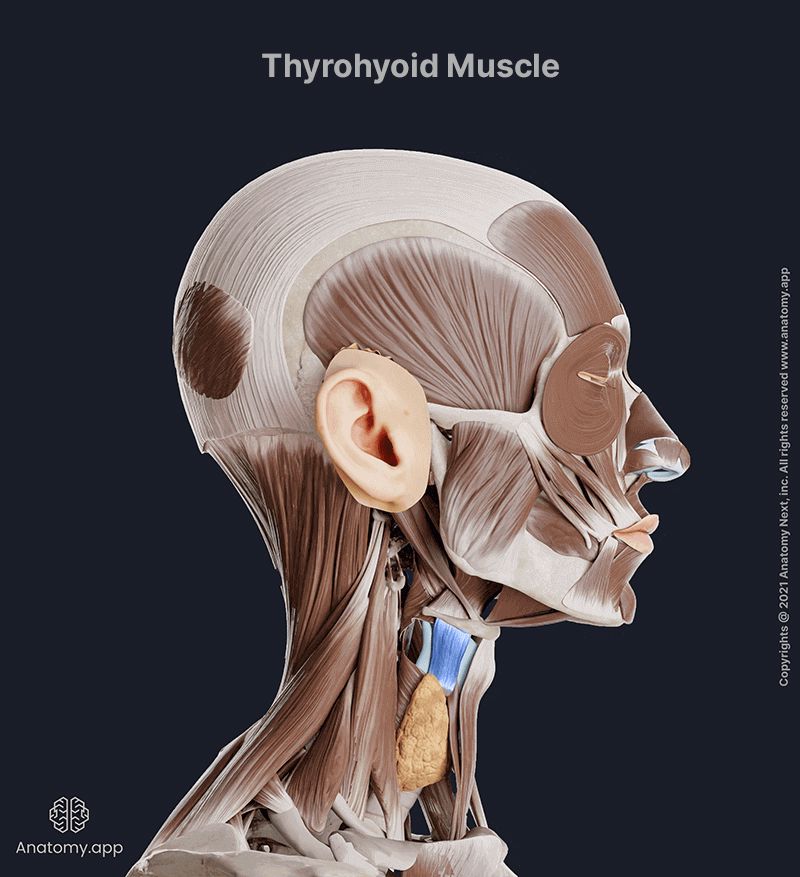- Anatomical terminology
- Skeletal system
- Joints
- Muscles
- Head muscles
-
Neck muscles
- Superficial neck muscles
- Scalene muscles
- Suprahyoid muscles
- Infrahyoid muscles
- Prevertebral muscles
- Suboccipital muscles
- Muscles of upper limb
- Thoracic muscles
- Muscles of back
- Muscles of lower limb
- Heart
- Blood vessels
- Lymphatic system
- Nervous system
- Respiratory system
- Digestive system
- Urinary system
- Female reproductive system
- Male reproductive system
- Endocrine glands
- Eye
- Ear
Thyrohyoid
The thyrohyoid (Latin: musculus thyrohyoideus) is a small quadrilateral-shaped neck muscle located in the anterior neck region between the thyroid cartilage of the larynx and hyoid bone. It depresses the hyoid bone. The thyrohyoid belongs to the infrahyoid muscle group, and it is also classified as the anterior neck muscle. This muscle is considered an extension of the sternothyroid muscle as the thyrohyoid begins where the sternothyroid ends.
| Thyrohyoid | |
| Origin | Thyroid cartilage |
| Insertion | Border between greater horn and body of hyoid bone |
| Action | Depresses hyoid bone Elevates larynx |
| Innervation | Anterior ramus of first cervical spinal nerve (C1) via hypoglossal nerve |
| Blood supply | Branches of lingual artery Infrahyoid and superior laryngeal arteries of superior thyroid artery |
Origin
The thyrohyoid originates from the oblique line of the thyroid cartilage.

Insertion
The thyrohyoid muscle inserts on the inferior aspect of the border between the greater horn and body of the hyoid bone.
Action
Contractions of the thyrohyoid pull the hyoid bone downward (depress the hyoid bone) or elevate the larynx. This muscle also brings the hyoid bone and thyroid cartilage closer together.
Innervation
The thyrohyoid is innervated by the anterior ramus of the first cervical spinal nerve (C1) via the hypoglossal nerve (CN XII).
Blood supply
The thyrohyoid muscle receives arterial blood supply from the infrahyoid and superior laryngeal arteries, branches of the superior thyroid artery. Also, branches of the lingual artery provide the arterial supply to the thyrohyoid muscle. Lingual and superior thyroid arteries are branches of the external carotid artery.